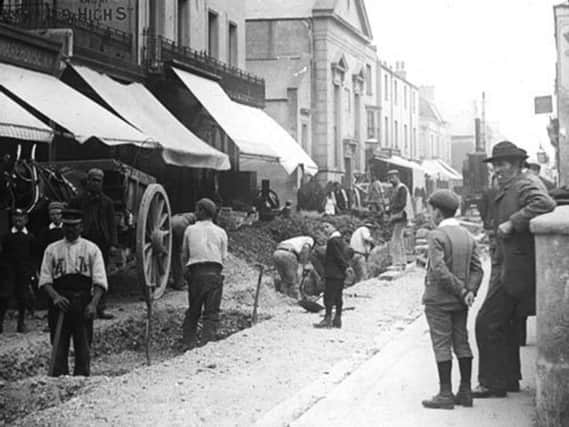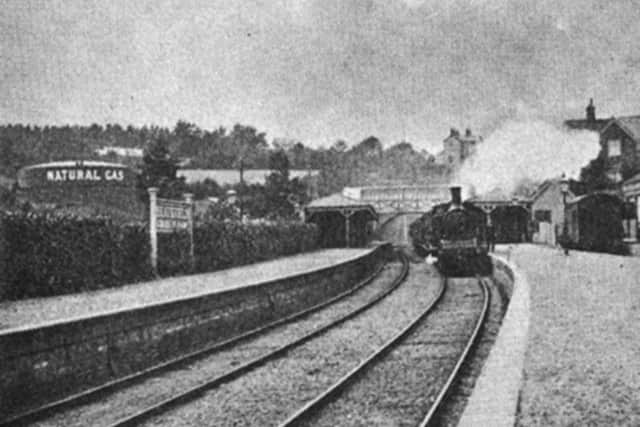When 20th century life in Heathfield was a natural gas


At the beginning of the 19th century the situation was very different. Though some illumination in towns was possible through candles in lamps that were lit in the evening by a lamp lighter (and extinguished by most likely the same person in the morning), generally the streets would be dark and gloomy, particularly so when there was no moon.
But some two decades into the new century and momentous changes in the provision of power were taking place. Gas lighting came to Lewes in 1822 courtesy of Messrs. Headley and Company. Their depot was situated in the Cliffe area of the town, beside the River Ouse. The gas they supplied was claimed to be of superior quality due to the use of quicklime in the purification process.
Advertisement
Hide AdAdvertisement
Hide AdA contemporary account reads: “There were three furnaces heating 11 retorts and two gasometers capable of holding 5,000 cubic feet of gas. The pipes laid in the streets are up to five inches in bore, branching from which are the numerous small pipes for supplying the public lamps, shops and private dwellings with energy.


“There is nothing more indicative of the progress of science than the application of this aeriform fluid, to purposes of public convenience and private comfort. Not many years ago the gas itself was unknown and could offer no practicable service to the public at large. Now almost every town in the kingdom is illuminated by its consumption and this magic flame darts its penetrating rays through lanes and alleys, where before darkness perpetually reigned. The inhabitants of Lewes may hail the change. Some inconvenience has been occasioned by the breaking up of the pavement in every direction, but this was a temporary evil, which already is nearly remedied.”
So proof that road works have been a bane for a lot longer than one might think! Incidentally, that word “aeriform” simply means “gaseous: having the nature of air”.
The potential of “fracking” to extract gas in Sussex has heated passions in recent years. Yet the discovery of flammable natural gas in the east of the county around Netherfield was first recorded in an 1875 document compiled by one Mr. Henry Willett. They were actually searching for water but in making experiments “… on the temperature, etc, at various depths and on lowering a light into the bore-tube, an explosion occurred”. No attempt was made to exploit the finding.
Advertisement
Hide AdAdvertisement
Hide AdAnother accidental discovery of gas occurred in 1895 in the stable yard of the Heathfield Hotel near where Sainsburys store is located today. At a depth of 228 feet the site foreman observed that water which had been put down the bore-hole to assist the working of the tools seemed to be boiling. As he prepared to lower a candle to investigate, the gas arising from the bubbles caught fire and shot out of the shaft, rising "to about the height of a man". The hole was sealed off as no water had been discovered.


In 1896 Heathfield saw a third discovery of Sussex gas. The rail operators sought purer water for use in their engines and sank a bore-tube near the station. A strong smell of gas was initially put down to "foul air" in the bore-tube. No water was found and drilling was abandoned, the bore having reached a depth of 377 feet. However, with gas plainly escaping from the wellhead, on this occasion it was decided to use it for the station lighting. This was accomplished early in 1898.
In 1901 an American company - "The Natural Gas Fields of England Ltd" - sank several boreholes around Heathfield, with the output from one reaching an impressive 15 million cubic feet a day – equivalent then to one eighth of the total daily gas consumption in London. Despite early optimism, the company went bust just three years later in 1904.
Heathfield Station continued to be lit by local gas until 1930, when the then Ministry of Mines stepped in. Due to its purity the gas was compressed into cylinders and sent to laboratories researching ways of improving safety in the pits. By 1963 it was evident that the gas reservoir was rapidly dwindling and it was decided to seal off the shaft. The station was closed two years later.
Advertisement
Hide AdAdvertisement
Hide AdIn the hope of emulating Heathfield’s good fortune, exploratory boring was carried out at Henfield, Hellingly and Hankham near Pevensey. In 1955 British Petroleum undertook test drilling in Heathfield near the town’s Gibraltar Tower. Gas was indeed discovered but not in commercial quantities.
There still exist tangible reminders of Heathfield’s flirtation with the gas industry. These are in the shape of medallions struck to mark the coronation of Edward VII and Queen Alexandra – one side features the royal heads and the reverse carries the inscription: “Heathfield, Sussex, 1902. Natural gas first used for light and power.”
Between the world wars there was much talk of an extensive oil field lying beneath Heathfield. The rumour was recently proven to be true by the British Geological Survey who estimate there are over four billion barrels-worth of oil held under the Sussex Weald. With current technology around 220 million barrels of it could be recoverable but that amount is equivalent to just half a per cent of what has been pumped out of the North Sea in a single recent year